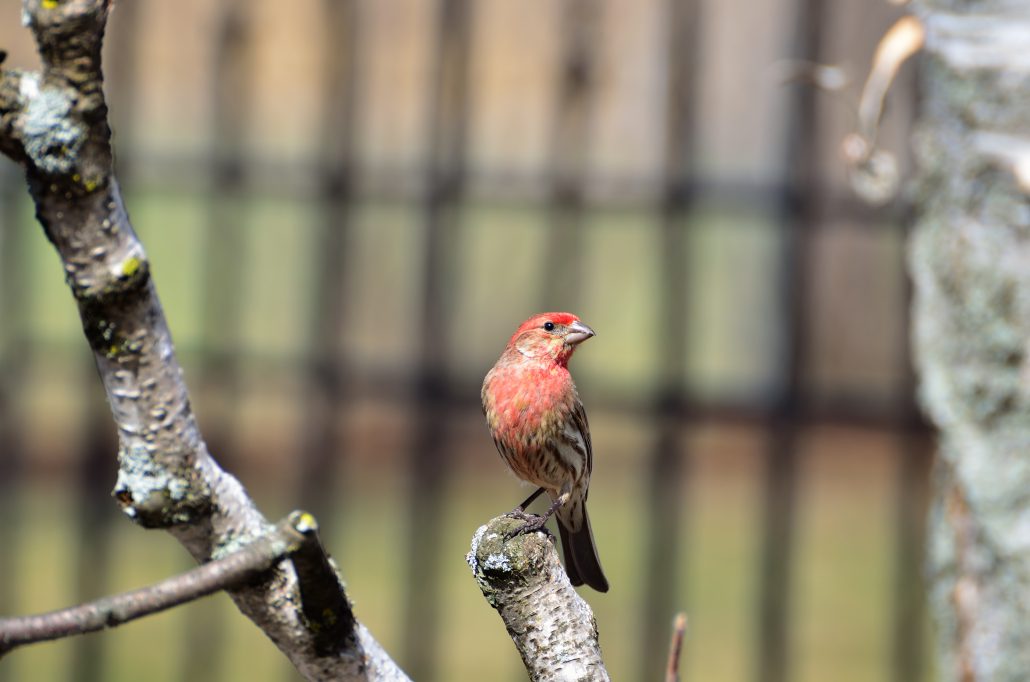
House Finches don’t mind people and are a common sight in city parks, backyards, farmland and urban areas.
Photo by Heriberto Verdugo-Munguia
Feeding and watching backyard birds has become tremendously popular over the last two decades. It’s estimated that 30% of households in the U.S. and Canada put out seed for birds. By the thousands, people are enrolling in programs like Audubon Rockies’ Habitat Hero and National Wildlife Federation’s Gardening for Wildlife. New tools and resources, such as our Guide to Backyard Birds of the Front Range, provide enthusiasts with guidance about how to create a bird-friendly oasis around their home, neighborhood and schoolyards.
Living among people can be challenging for birds and other wildlife. Our buildings, structures, and mechanical devices pose hazards that birds aren’t well equipped to deal with. We need to pay special attention not only to providing food, water, shelter and places to raise young — but also to their general safety.
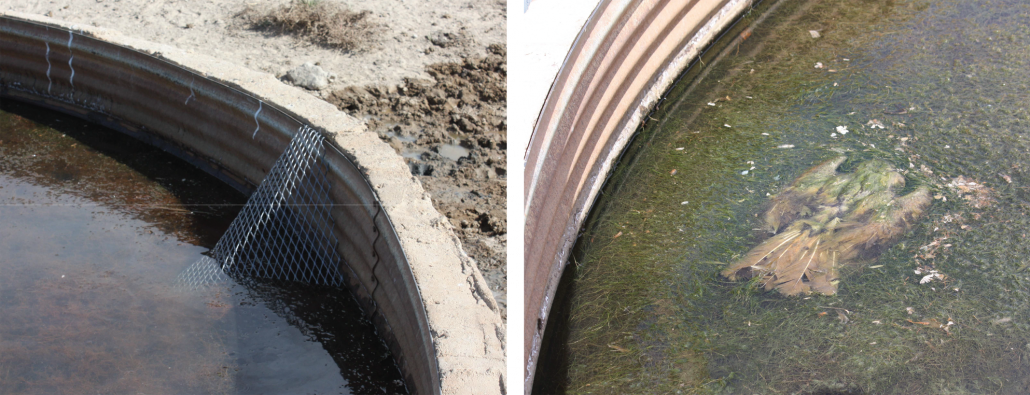
Low-tech, low-cost solutions such as this stock tank ladder (left) can prevent tragedies
such as the drowning of this Red-tailed Hawk (right).
Sometimes the danger is difficult to imagine. Even open farmland can present risks to birds and small mammals. If you have ever looked out into an open field, you may have seen deep water tanks placed for livestock. These tanks are often the only water source for miles and attract all sorts of birds and wildlife. Without a means of escape, birds that fall into these tanks often drown. The good news is that a simple, inexpensive fix can prevent this. Installing stock tank ladders costing about $8 saves countless lives. Our Tools for Landowners page even includes a DIY stock tank ladder design that you can download to make our own.
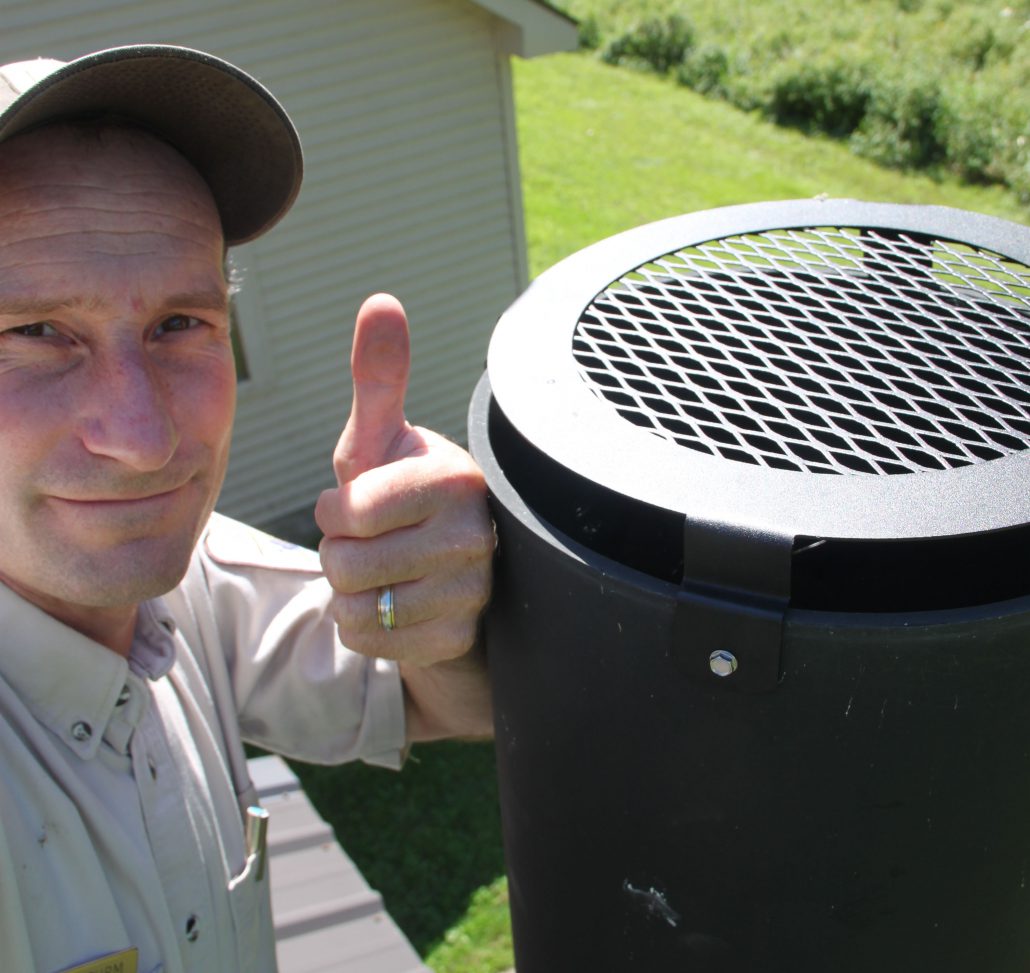
Covering vent pipes with screen ensures birds don’t enter and get trapped.
Vault toilets, the self-contained restrooms found in many of our wilderness areas and open spaces, are another danger zone. The vertical ventilation pipe coming from the toilet vault looks like a perfect roosting spot for cavity-nesters that like dark, narrow spaces. The pipes resemble the trunk of a tree, and when an owl or other bird enters the pipe, they become trapped. Affixing a simple vent screen over the pipe prevents these unfortunate incidents. The Poo Poo Project begun at the Teton Raptor Center is working to alleviate this problem with a simple installation costing only $30-35 per screen and a few minutes of time.
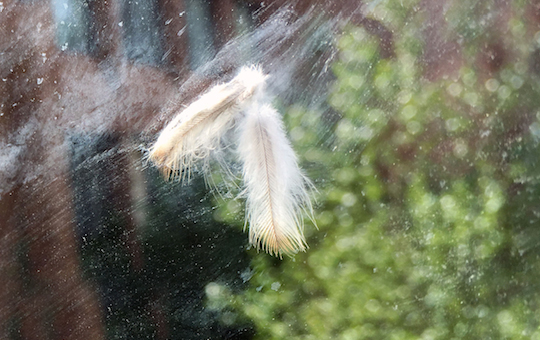
Smudges, streaks and feathers are tell-tale signs of window strike. Photo courtesy of Wild Birds Unlimited, Inc.
Large expanses of windows and glass are a desirable feature of many homes. If you have a great view, why not enjoy it? But windows are a major problem for birds. Window strikes cause millions of bird deaths each year and many homeowners are unaware that birds have even hit their windows and fallen to the ground beneath. Birds may strike a window because they see their own reflection and believe it’s another bird in their territory. Others simply don’t recognize the glass as a barrier, believing the reflection is open pathway through which they can fly. Some hit windows by mistake in their haste to escape a predator.
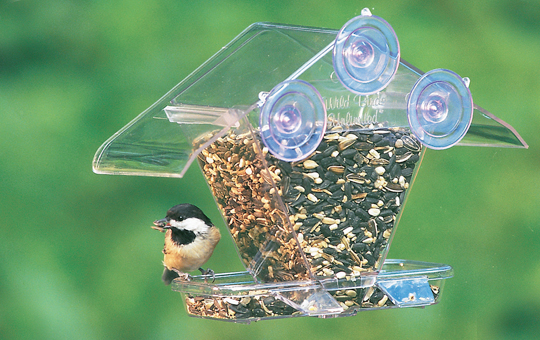
Placing a feeder directly on a window helps break up the reflective surface, and gives the added bonus of a close-up view of birds! Photo courtesy of Wild Birds Unlimited, Inc.
Window strikes can be greatly reduced by taking easy measures to decrease the reflection created by the glass. One way is to simply let your windows stay a bit dirty! Placing feeders within four feet of a window or outside of 10 feet will create a “strike-free” zone to protect birds. You can even place a window feeder on the window — it will help slow the birds down in their approach, and you get the added benefit of seeing them up close. Visit this window strikes information page for more tips.
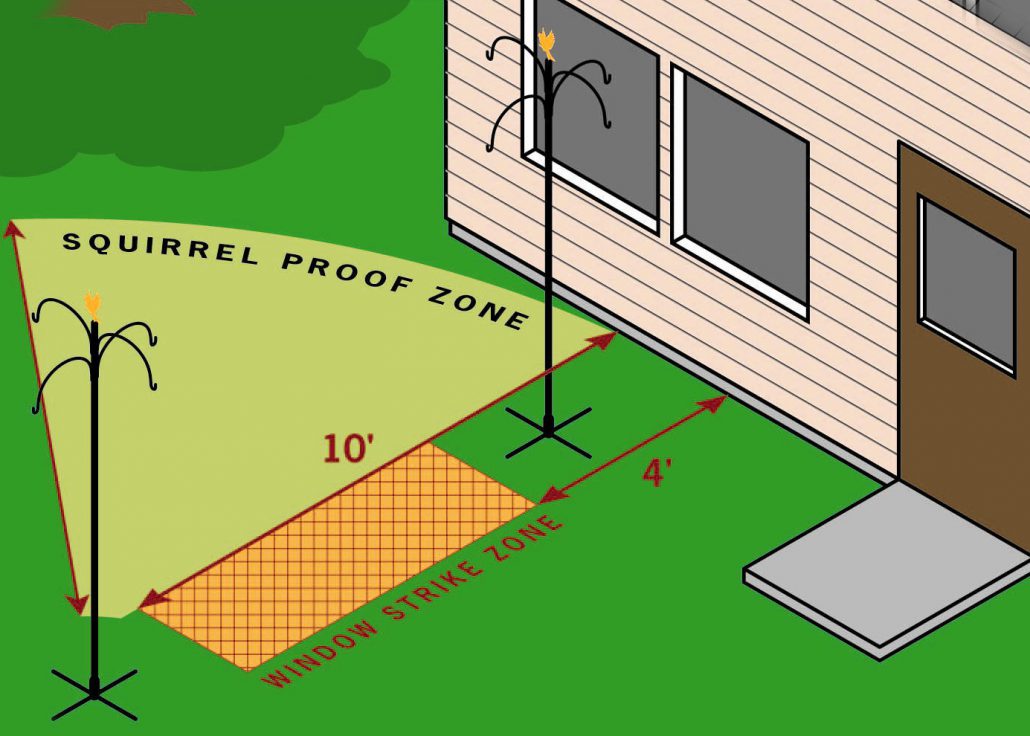
Take care when placing feeders to help prevent window strikes. Photo courtesy of Wild Birds Unlimited, Inc.
Wild Birds Unlimited is dedicated to helping homeowners create a safer habitat for wild birds. Just as our population grows, so too does our interaction with nature. It’s exciting to know that more and more people are taking an interest in birds and wildlife in their backyards and communities. Everyone can make a difference to insure the safety of wild birds and continue to make our landscapes a safe space for all year-round residents and migratory species.
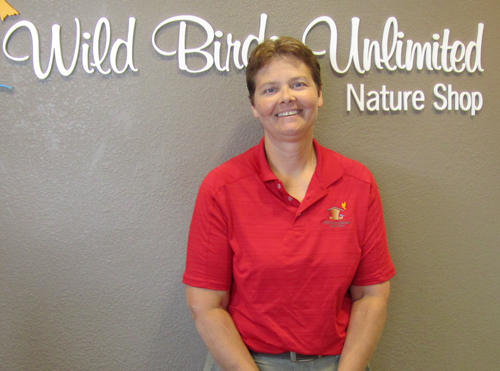
About the Author:
Lauren DeRosa is owner of the Wild Birds Unlimited Nature Shop in Fort Collins, CO. She enjoys introducing people to the wonders of backyard birding and helping others create bird-friendly oases in their home landscapes.
She can be reached via e-mail or by calling (970) 225-2557.


